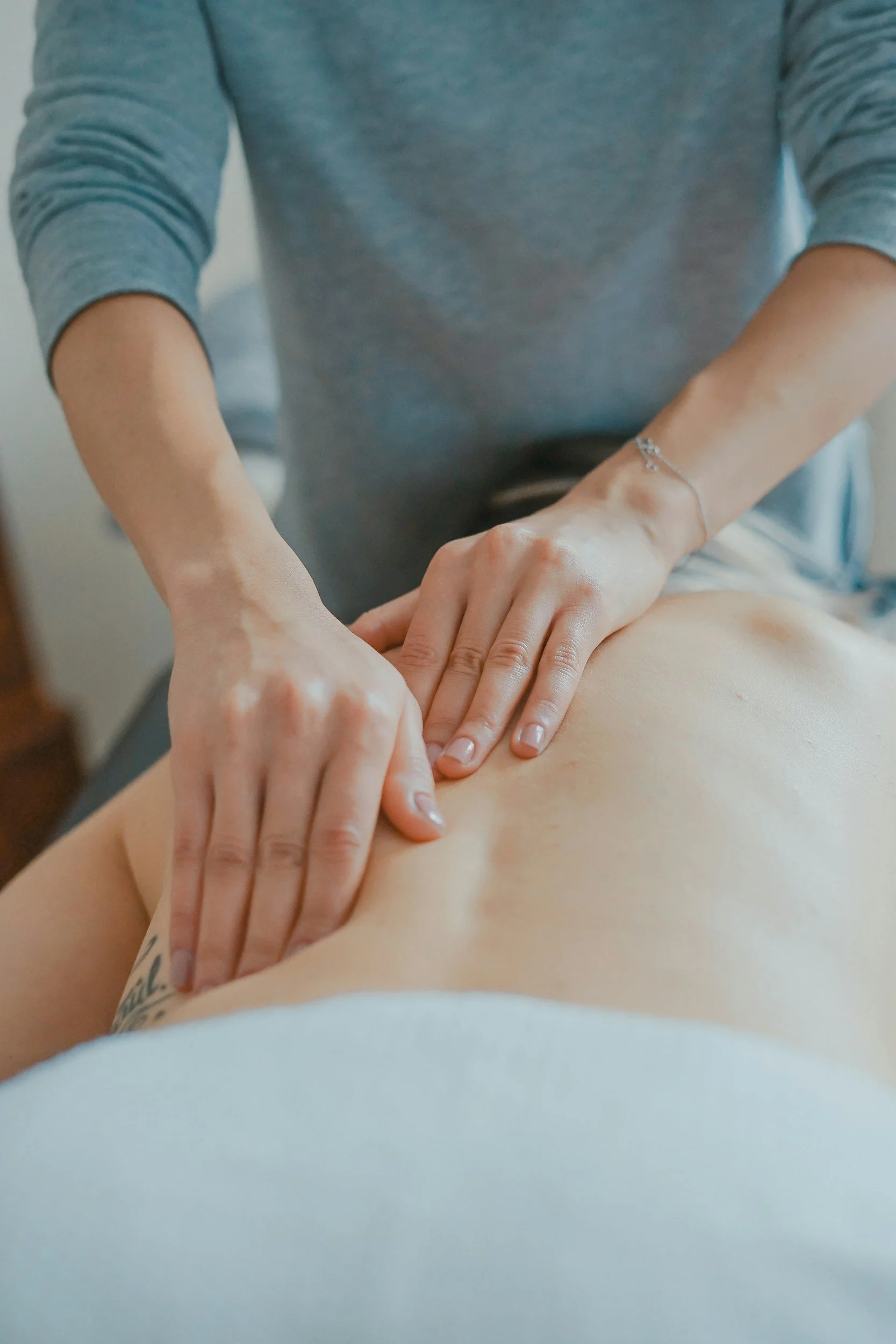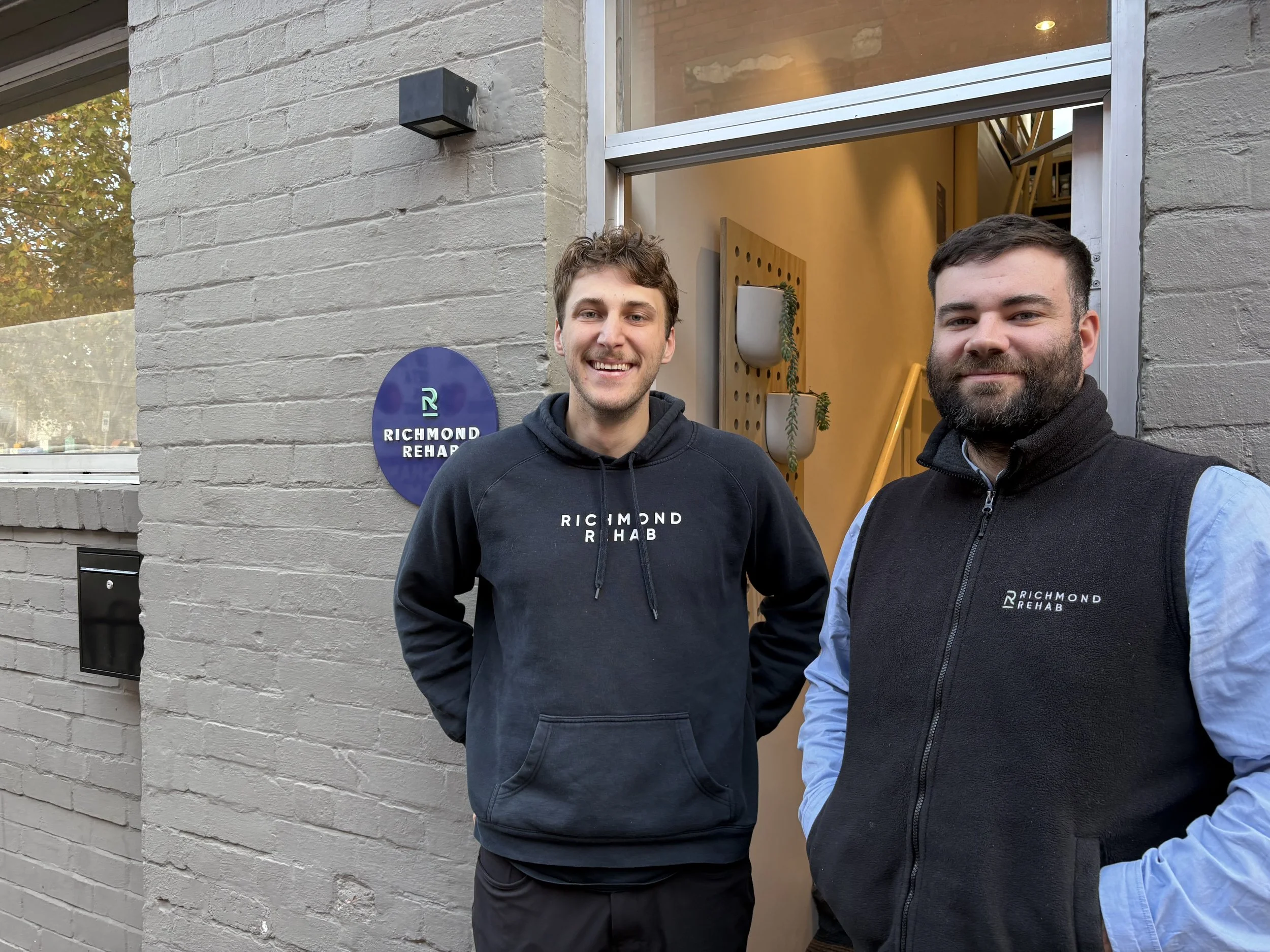
Remedial Massage & Myotherapy at Richmond Rehab
Move Better
Feel Better
Move Better Feel Better
Our remedial massage and myotherapy services support people recovering from injury, managing pain or simply looking to move more comfortably. Whether you’re after targeted soft tissue treatment, recovery between training sessions or help with chronic tension or mobility issues, we’ll point you in the right direction.
Our therapists work closely with the physio team to make sure your care is aligned and appropriate. You don’t need to decide between massage or myotherapy. We’ll help you figure out what suits you best.
Who We Help
We treat a wide range of presentations, but these are some of the key groups we support:
Everyday Tension & Stress
Support your nervous system, manage stress, and find a moment of calm during busy weeks.
Muscle Soreness & Recovery
Help your body recover after a big session, a long ride, or a stretch of inactivity.
Chronic Pain Management
When pain is ongoing, massage can play a role in supporting movement, comfort and wellbeing.
Complementing physiotherapy treatment
Ideal when used alongside your physio’s plan — a way to reduce discomfort, stay connected, and maintain progress.
Desk-bound bodies
Tackle postural fatigue, headaches, or that all-too-familiar neck and shoulder tightness.
Where We Work
Massage and myotherapy sessions are available both in-clinic and through home visits for eligible clients.
In Our Cremorne Clinic
Our Richmond space is calm, private, and set up for a range of soft tissue techniques. If you’re unable to travel due to pain, mobility issues or other challenges, we may be able to provide treatment in your home.
In Your Home
Funding Options
Massage and myotherapy sessions at Richmond Rehab are privately funded.
We process most private health insurance rebates on the spot using HICAPS. Some health funds or policies may not be covered, or may require you to pay upfront and claim manually. In those cases, we’ll email you a receipt with all the details you need to submit your claim.
Rebate amounts vary depending on your insurer and level of extras cover. If you’re unsure, we recommend checking directly with your health fund before your appointment.
Meet The Team
Julius Principe
Julius brings over 10 years of experience, with a strong focus on firm, targeted treatments and dry needling. He works best one-on-one, tailoring each session to help manage muscular tension. Outside the clinic, he enjoys hiking and time outdoors.
Nathan Rogerson
Nathan combines solid hands-on skills with a keen interest in movement. He’s currently studying Exercise Science and works with local athletics clubs. Nathan collaborates closely with our physios to support effective care.
Why Choose Richmond Rehab for Massage & Myotherapy
Massage at Richmond Rehab is part of a broader approach. We see it as a valuable tool to help manage symptoms, support recovery, and give patients space to check in with how they’re feeling.
Our massage team works alongside physiotherapists to make sure treatment is appropriate for your needs. When something sits outside the scope of massage, we’ll let you know. That might mean recommending a physio appointment or discussing other ways to support your goals.
We don’t believe in one-size-fits-all routines. You’ll get a treatment that’s shaped by your feedback and adjusted along the way. We check in, we listen, and we keep things realistic.
This is massage that fits into a bigger picture of care. Thoughtful, grounded, and part of a team that puts people first.
Ready To Book?
Book online in just a few clicks.
Or if you’re unsure who to see, reach out — we’re happy to help.
Unsure who’s the right fit? You can always message us — we’re happy to help.











